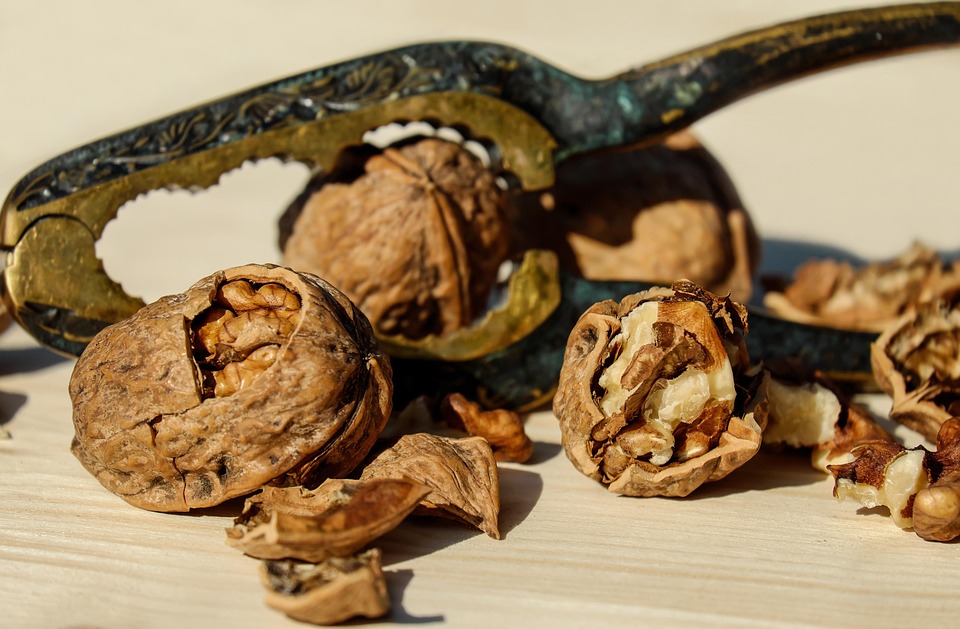Nuts for bone health are a simple, delicious tool your body can use to build stronger bones and fight fractures. I mean that. Bite-sized, travel-ready, and quietly powerful — nuts deliver minerals, healthy fats, and protein your skeleton craves. This matters because strong bones keep you upright, active, and confident into the years most people fear.
If you’ve ever worried about brittle wrists after a fall or losing height with age, you’ll want to read this. I’ll show seven practical ways nuts can boost your bone strength, how to eat them without packing on calories, and the science and sensible tips that make nuts a friend to your bones — not a fad.
Contents
- Nuts For Bone Health: The Essentials
- 1. Deliver Calcium and Magnesium Without Fuss
- How To Eat Nuts Without Overdoing It
- Science And Expert Voices Behind The Advice
- Practical Meal Ideas To Boost Your Bone Routine
- Common Concerns — Allergies, Calories, And Sodium
- Combining Nuts With Supplements And Exercise
- The Bottom Line
- FAQ
Nuts For Bone Health: The Essentials
Let’s clear the air: when I say nuts for bone health, I don’t mean a cure-all. I mean a real, evidence-backed contributor to skeletal strength. Nuts provide magnesium, phosphorus, protein, and sometimes calcium — all essential to bone remodeling. Research published by universities and hospitals links nut consumption to better markers of bone density and lower inflammation, which matters for bone repair.
You want credibility? The Harvard T.H. Chan School of Public Health and National Institutes of Health have pages that explain the nutrients in nuts and their roles in bone biology. Eat them thoughtfully, and they become a bone-support strategy that’s easy to keep.
1. Deliver Calcium and Magnesium Without Fuss
Calcium gets the headlines, but magnesium is the quiet partner that helps calcium do its job. Almonds and Brazil nuts are rich in magnesium; some nuts also contain modest calcium. When you add nuts for bone health into your daily pattern, you’re giving your bones both building blocks and the helpers that allow those blocks to lock together.
Practical tip: swap a handful of almonds for a sugary snack. You get about 80 mg of magnesium per ounce and a gentle protein boost. Over weeks, these little choices compound. Doctors often recommend dietary sources first, and nuts are one of the easiest to work in.
2. Provide Protein To Support Bone Matrix
Bones aren’t inert. They’re living tissue that needs protein to maintain the collagen matrix. Walnuts, cashews, and pistachios bring plant protein plus essential amino acids. Including nuts for bone health means you’re feeding the scaffolding that mineralizes into strong bone.
Mix nuts with yogurt, salads, or a smoothie. The protein helps muscle, too — and stronger muscles reduce the fall risk that leads to fractures. That’s a twofer: muscle support and structural bone support.
3. Deliver Healthy Fats That Reduce Inflammation
Chronic inflammation accelerates bone loss. Many nuts, especially walnuts, are rich in omega-3 fatty acids and monounsaturated fats that lower inflammatory markers. Using nuts for bone health in your diet can blunt the inflammatory whisper that erodes bone over time.
Eat raw or lightly toasted nuts. Avoid sugary coatings. You’ll get fats that feed cell membranes and quiet inflammation without processed additives that undermine health.
4. Offer Key Trace Minerals For Bone Remodeling
Trace minerals like zinc and copper play a role in bone formation and repair. Pistachios and cashews are good sources. Add nuts for bone health into a meal plan and you’re supplying the enzymes and cofactors bones use to rebuild after stress.
Tip: pair nuts with vitamin C–rich fruits to optimize collagen synthesis. The combo gives raw materials and the chemistry to glue them into durable bone.
5. Help Maintain Healthy Body Weight
Weight-bearing strains bones in a beneficial way. But excess weight or rapid loss can be harmful. Nuts are satisfying and nutrient-dense, helping you feel full with smaller portions. That’s why many dietitians recommend nuts for bone health as snacks — they prevent overeating while supplying bone-supporting nutrients.
A controlled handful each day stabilizes appetite. Studies from nutrition departments at universities show people who snack on nuts tend to have better weight control and metabolic profiles.
6. Improve Vitamin D And Calcium Absorption
Some nutrients need fat to be absorbed. Vitamin D is one of them, and it’s crucial for calcium uptake. Pairing vitamin D sources with nuts for bone health helps your body use both vitamin D and dietary calcium more efficiently. That’s practical biology: fat-soluble vitamins travel better when you include healthy fats.
Have a salad topped with walnuts and a vinaigrette when you take your vitamin D dose. Small moves like this increase nutrient synergy — and bones love synergy.
7. Reduce Oxidative Stress That Harms Bone Cells
Antioxidants in nuts — selenium in Brazil nuts, vitamin E in almonds — neutralize free radicals that damage bone cells. Using nuts for bone health decreases oxidative stress and protects the cellular environment where bone remodeling happens.
One Brazil nut a few times a week can meet your selenium needs. That’s not extravagant; it’s strategic. You’re feeding cellular defenders that keep bone-forming cells functioning.
How To Eat Nuts Without Overdoing It
Nuts are calorically dense, and I won’t pretend otherwise. But portion control is straightforward and elegant. Use these real-world tips to make nuts for bone health a healthy habit, not a calorie trap.
- Measure a 1-ounce serving (about a small handful) and put that in a dish rather than eating straight from the bag. That keeps your portions honest.
- Mix nuts with fresh fruit or plain Greek yogurt. The fiber and protein slow digestion and increase satisfaction.
- Rotate varieties: almonds, walnuts, pistachios, cashews, and Brazil nuts each offer different mineral profiles. Variety keeps your bone-support toolbox full.
Make a weekly ritual: portion out snack packs on Sunday night. You’ll be more likely to grab these nutrient bombs instead of chips.
Science And Expert Voices Behind The Advice
I want you to trust this guidance. Researchers at major hospitals and universities have investigated nut consumption and bone markers. Large nutrition studies show correlations between regular nut intake and improved bone mineral density. Dietary experts at the National Institutes of Health and Harvard emphasize the role of magnesium, protein, and healthy fats — nutrients that are abundant in nuts — in maintaining skeletal health.
If you want to dive deeper, look up research from nutritional science departments and hospital websites that describe how magnesium and zinc affect bone metabolism. The evidence is not silky-smooth or miraculous, but it’s consistent enough to recommend nuts as part of a bone-friendly plan.
Practical Meal Ideas To Boost Your Bone Routine
Don’t make this complicated. Here are simple, tasty ways to fold nuts for bone health into your day.
- Morning: Stir crushed almonds into oatmeal with berries for vitamin C synergy.
- Lunch: Toss walnuts into a kale salad with citrus and chickpeas.
- Snack: A measured mix of pistachios and a small apple.
- Dinner: Sprinkle chopped cashews over stir-fried tofu and vegetables.
These small shifts add calcium, magnesium, zinc, healthy fats, and protein without fanfare. That’s the power of practical nutrition: sustainable, simple, effective.
Common Concerns — Allergies, Calories, And Sodium
Allergies are real and serious. If you’re allergic, nuts are not for you — and that’s non-negotiable. For those who aren’t, pay attention to salted and flavored nuts. Excess sodium and sugar undercut the benefits.
Choose unsalted, raw, or dry-roasted options. If you’re watching calories, stick to one ounce per serving and save them for moments when you need real satiety.
Combining Nuts With Supplements And Exercise
Supplements have their place. Calcium and vitamin D supplementation can help when dietary intake falls short. But nuts provide cofactors — magnesium, zinc, healthy fats — that make supplements work better.
Combine eating nuts with weight-bearing exercise. Lift, walk briskly, climb stairs. Muscle work signals bones to remodel stronger. When you pair exercise with nutrient-rich foods like nuts, you’re creating the conditions for healthy, resilient bone.
The Bottom Line
If you want a straightforward habit that supports skeletal strength, start with nuts for bone health. They give magnesium, protein, healthy fats, antioxidants, and trace minerals that bones need to stay strong and resilient. Eat them in measured portions, rotate varieties, and pair them with vitamin D sources and weight-bearing activity. The result is a practical, sustainable path to better bone health that fits your life.
Make the swap: a handful of nuts instead of a processed snack. Your bones — and your future self — will thank you.
Bold, small promise: a consistent handful a day helps. Keep moving. Keep choosing real food. Keep your bones in your corner.
FAQ
FAQ
Are all nuts equally good for bones?
No. Different nuts offer different nutrients. Almonds are higher in calcium and magnesium; walnuts provide omega-3s; Brazil nuts supply selenium. Rotation gives you a broader nutrient profile for bone support.
How much should I eat daily?
Aim for about one ounce (a small handful) per day. That’s nutritionally meaningful without excessive calories. If you’re adding nuts to meals rather than replacing other foods, watch total intake.
Can nuts replace calcium supplements?
Nuts help, but they rarely provide enough calcium alone. Use nuts as part of a balanced plan that includes dairy or fortified foods, sun exposure or vitamin D supplements if needed, and medical advice when appropriate.
What if I’m allergic?
If you have a tree nut allergy, don’t substitute nuts. Focus on other magnesium, protein, and healthy-fat sources, such as seeds, legumes, and oily fish, and consult your healthcare provider for a tailored plan.
References
-
The National Institutes of Health explains the role of magnesium in bone health and recommends dietary sources and intake levels (http://ods.od.nih.gov/factsheets/Magnesium-Consumer/).
-
Harvard T.H. Chan School of Public Health provides a detailed overview of nuts, their nutrients, and their role in a healthy diet that supports bone and cardiovascular health (http://www.hsph.harvard.edu/nutritionsource/food-features/nuts-and-seeds/).
-
The Mayo Clinic outlines calcium and vitamin D recommendations for bone health and offers practical ways to optimize intake alongside dietary choices like nuts (http://www.mayoclinic.org/tests-procedures/vitamin-d-test/in-depth/vitamin-d/art-20045568).
-
PubMed hosts peer-reviewed research exploring associations between nut consumption and bone mineral density or inflammatory markers related to bone remodeling (http://www.ncbi.nlm.nih.gov/pmc/articles/PMC/).
-
The National Osteoporosis Foundation provides guidance on lifestyle strategies for maintaining bone health, including nutrition and physical activity recommendations (http://www.nof.org/patients/what-is-osteoporosis/).








